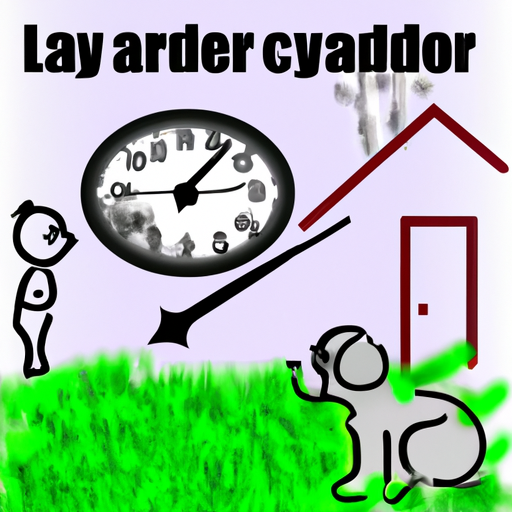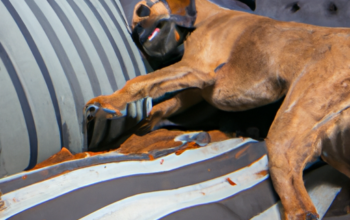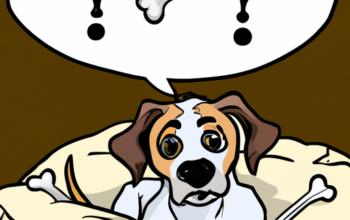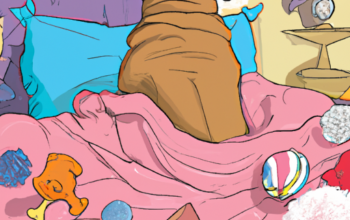Just like teaching a toddler to use the potty, training your puppy to pee outside isn’t always a walk in the park. You may find yourself wondering how long you should wait for your little furball to do their business outdoors. It’s an important question as it can significantly affect not only their housebreaking progress but also their overall health and well-being.
This article will delve into puppy potty training basics, signs of elimination needs, meal and hydration schedules, effective training techniques for faster results, plus dealing with potential health issues related to urination. Armed with this knowledge, you’ll be better equipped to serve your four-legged friend’s needs and cultivate a healthier relationship between you two.
Remember that patience is key and every pup is unique; what works for one might not work for another. Let’s embark on this journey together!
Understanding Puppy Potty Training Basics
You’ve got to understand, potty training a puppy isn’t just about waiting outside until they pee; it’s about consistency, patience, and positive reinforcement. This process takes time and doesn’t happen overnight. It needs you to be dedicated and regular in teaching your pup where and when it’s appropriate to do their business.
Start by establishing a consistent routine for mealtimes. Puppies usually need to go out 5-30 minutes after eating. Take them out frequently—every two hours is common—and always right after they wake up from a nap or finish playing.
Remember, positive reinforcement is crucial here. When your adorable companion does pee outside, shower them with praise and even consider a small treat. Through this approach, your little one will quickly learn what behavior gets rewarded!
Recognizing Signs of a Need to Eliminate
Spotting the tell-tale signs that it’s time for a potty break can be like reading tea leaves, but it’s crucial in training a young pup to eliminate properly. Paying keen attention to their behavior can tip you off to when they need to go.
Puppies often show signs such as sniffing around, circling, whining, or showing restlessness. If your pup suddenly stops playing and starts looking for a corner, it’s likely they need to go.
Remember, puppies have small bladders and cannot hold their urine for long periods of time. Generally, they’ll need to pee every one to two hours. Regularly taking them outside provides opportunities for success in house training. Your patience and understanding are essential elements in serving your furry friend’s needs effectively during this period of learning and growth.
Meal and Hydration Schedules
Maintaining a consistent feeding and watering schedule can greatly assist in predicting when it’s time for a potty break. Feeding your puppy at the same times each day will help regulate their digestive system, allowing you to anticipate their bathroom needs more accurately.
Below is a typical schedule that may work for your pup:
| Time | Meal | Expected Potty Break |
|---|---|---|
| 7:00 AM | Breakfast | 7:30 AM |
| 12:00 PM | Lunch | 12:30 PM |
| 5:00 PM | Dinner | 5:30 PM |
Remember, puppies typically need to eliminate about half an hour after they eat or drink. By observing this pattern and adjusting based on your puppy’s unique needs, you’ll facilitate easier house training and provide better care for your furry friend.
Training Techniques for Faster Results
Let’s imagine, for a moment, that you’re a world-renowned dog whisperer with the ability to train your pup faster than the speed of light. Even then, you’d need some proven techniques to ensure success.
-
Consistency is Key: Stick to a routine. Take your puppy out after every meal or nap and before bed. This teaches them when it’s time to go outside.
-
Positive Reinforcements: Reward your puppy with praises or treats immediately after they pee outside, reinforcing this behavior.
-
Patience & Perseverance: Don’t rush the process; show patience if accidents occur.
Remember, training takes time even for canine prodigies! It’s about serving their needs while teaching them rules that keep both of you happy in your shared space.
Dealing with Potential Health Issues
Navigating the maze of potential health issues is no walk in the park, and it’s vital to stay vigilant to ensure your furry friend stays in tip-top shape.
If your pup takes longer than 15 minutes to pee or refuses altogether, they could be experiencing a medical problem like a urinary tract infection or bladder stones. These conditions can cause discomfort and may lead to serious complications if not treated promptly.
Always monitor your puppy’s behavior during potty breaks. Watch for signs such as straining, crying out in pain, frequent urination attempts with little output, or blood in urine.
If you spot these symptoms, don’t hesitate – take them immediately to the vet for evaluation. Remember: when it comes to health concerns, an ounce of prevention is worth a pound of cure.
Frequently Asked Questions
What is the average time it takes for a puppy to pee once they are outside?
Typically, it takes a puppy between 5 to 15 minutes to urinate once they’re outside. This can vary based on their age, diet, and hydration levels. It’s crucial you remain patient during this process.
Can weather conditions affect my puppy’s peeing habits?
Yes, weather conditions can indeed affect your puppy’s peeing habits. Extreme cold or heat may cause them to hurry their business, while rain might discourage them from going out altogether. Always consider this when training.
Does breed or size of the puppy affect the amount of time they take to pee outside?
Like a snowflake, each puppy is unique. Breed and size can influence how long they take to pee outside. Larger breeds may take longer due to their bigger bladder size. It’s vital to be patient and observant.
How can I keep my puppy safe while waiting for them to pee outside?
Ensure your puppy’s safety by keeping it on a leash, staying close by, and observing the surroundings for potential hazards. Make sure the area is fenced-off or free from traffic, predators, and harmful substances.
What should I do if my puppy refuses to pee outside?
When your puppy refuses to pee outside, it’s frustrating and perplexing. Stay patient, stick to a routine, and reward successful attempts. Consult a professional if the issue persists; every hurdle is worth their comfort and health.
Conclusion
In conclusion, it’s no walk in the park to potty train your puppy. You’ll need patience, consistency, and a keen eye for signs that they need to go.
While it might take up to 20 minutes after meals, remember each pup is unique. If issues persist, don’t hesitate to consult your vet.
In time, you’ll have this down pat and your pup will be on their best bathroom behavior.



